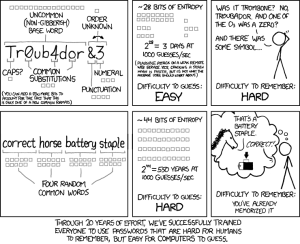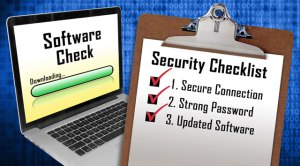WICHITA, Kan. (KSNW) – As technology expands into our homes, it offers a lot of convenience. But you don’t want that convenience to compromise your safety.
So are smart home devices reliable or can they expose you to unknown danger? We had a cyber security expert show us what devices can be hacked, how they can be hacked, and if you can prevent it.
Baby monitors, garage door openers, home surveillance cameras — they’re all gadgets that don’t come to mind when picturing an intruder in your home. But left unprotected, cyber security experts say that hackers can use common household smart devices to cause chaos and panic on the internet.
Cyber security expert Bill Ramsey says while smart devices are handy, the majority of companies making them aren’t security-focused.
“From there I could take control of your network and unlock your doors if you have that type of lock,” he explains. “We could disable security systems if they’re on a wireless network and we have the tools to be able to do that.”
That makes how you access the device and its internet streams potentially dangerous.
When it comes down to it, Bill says any device that’s not properly protected can be hacked.
So what devices can be broken into? How is it done? Can you prevent it?
THE TECH
We started by checking out the security of our homes Nest Cam. We use a Nest Cam as a baby monitor and wanted to make sure our son is safe from any uninvited eyes.
The Nest Cam uses a website to view, and in some cases store, video. This way parents can check on their children from anywhere in the world. The problem is, so could someone else.
“Can it happen? Yes. Does it happen? Yes. Is it super common? Probably not as common as you think if you’ve done the right things to secure your network,” reassures Bill.
Next we headed over to KSN assignment editor Rich Wood’s home. Rich is a self-professed techie and is into the latest and greatest smart home technology.
But are his devices secure?
Rich has indoor and outdoor surveillance cameras, smart garage door, door locks, indoor lighting and more. If someone were to hack into any of Rich’s smart devices they could not only access his home, but they could potentially see if he’s at home to stop them.
“All these types of devices, the passwords, the encryption, are always gonna be the first things you’re concerned with in order to keep a secure environment,” says Bill.
THE SOLUTIONS
He says all of the smart devices we’ve shown you can be made much more secure by following 3 steps.
1) Infrastructure
Your first and most secure choice is to use a wired internet system – not Wi-Fi. However, if your house isn’t wired for networking, that may not be feasible.
“If you’re going to use wireless you need to make sure it’s as secure as you can get it, that you’re using WPA-2 encryption, that you’re using good wireless passwords,” Bill tells us.
Home not wired for networking? There are instructions on how to do it. While this link is a few years old (use Cat7 ethernet cable), it is still applicable as far as the steps to running your cables in an existing home.
LINK | KSN: Boosting Your Bandwidth
2) Passwords
 (Courtesy XKCD. Click image to view.)
(Courtesy XKCD. Click image to view.)
The next thing you need to make sure is in place are good user names and passwords.
Bill explains, “User names and passwords you’re using on the devices is always important.”
Pass phrases with spaces, for example “I like to boat”, and password length make your passwords much more secure. Passwords don’t have to be cryptic, hard to remember words.
3) Updated software
And third, make sure your devices app and software is always using the most recent version.
“This is one that most people don’t think of or are unaware of is to make sure that the firmware of your device is always up to date,” says Bill.
 Bill says if your network and devices are properly secured, potential hackers won’t want to waste their time.
Bill says if your network and devices are properly secured, potential hackers won’t want to waste their time.
“These things are all deterrents. If somebody wants into something bad enough and they’re skilled enough, they’re going to get in.
So good passwords, protecting your wireless, those are all deterrents to keep people out because there’s easier targets.”
If you think you may not have the knowledge to set up a secure smart-home network, many of the smart devices offer professional installers that can help you get your devices up and running safely.
RELATED LINKS
PRODUCTS